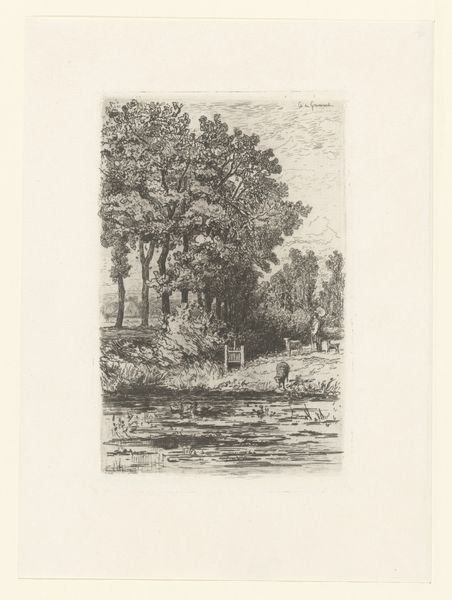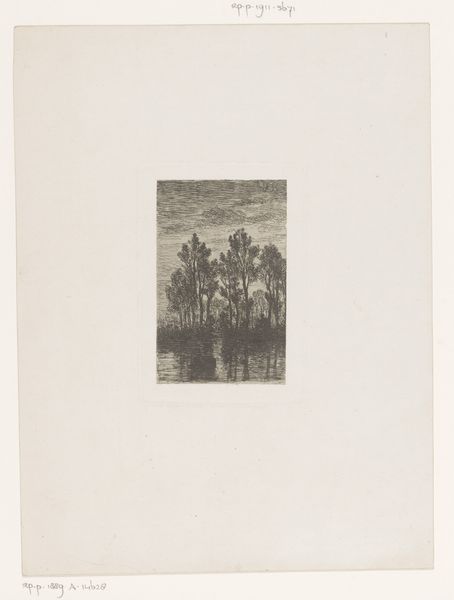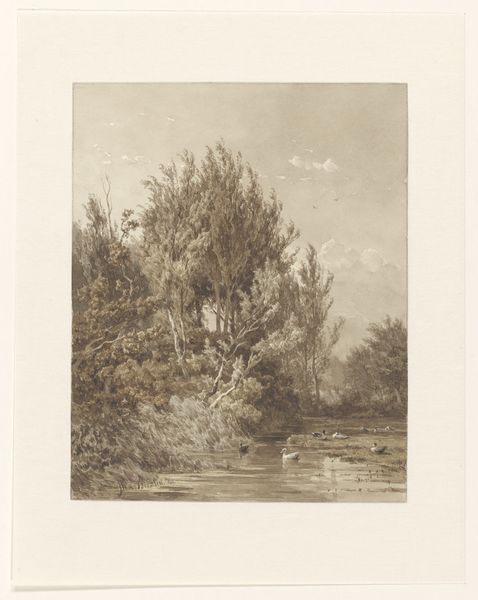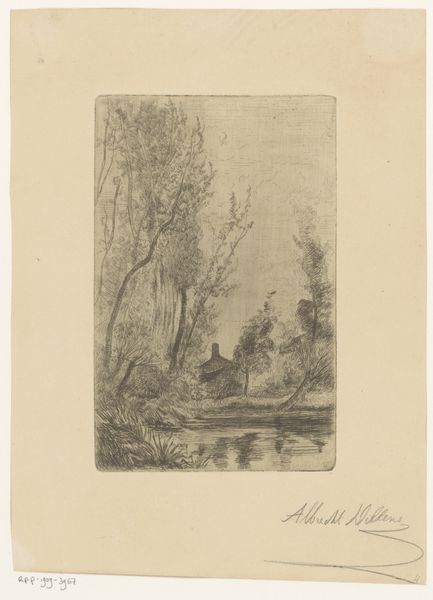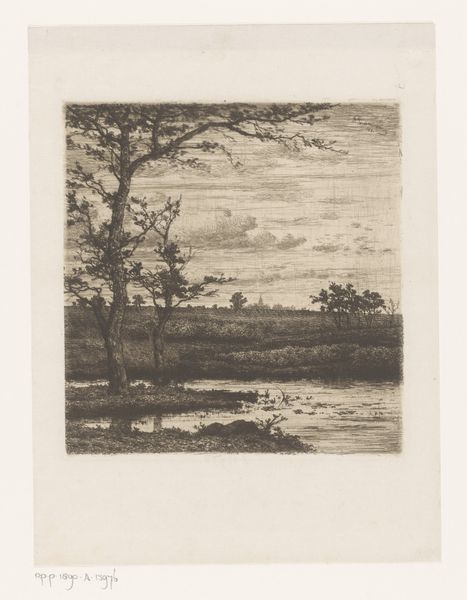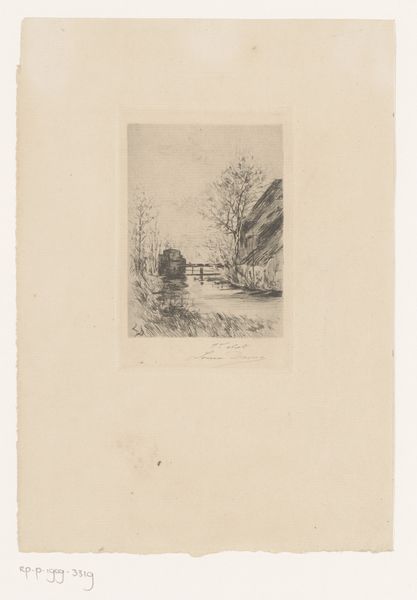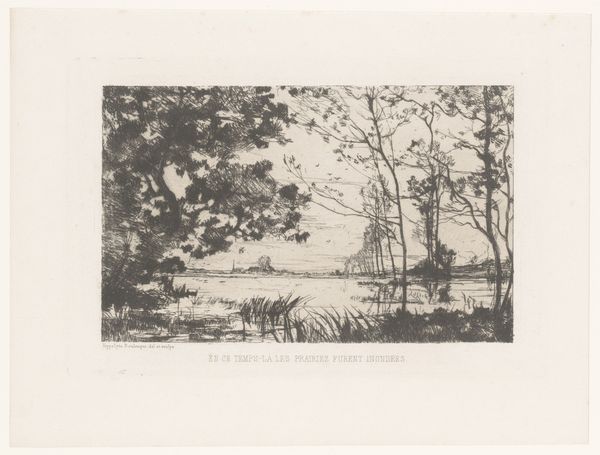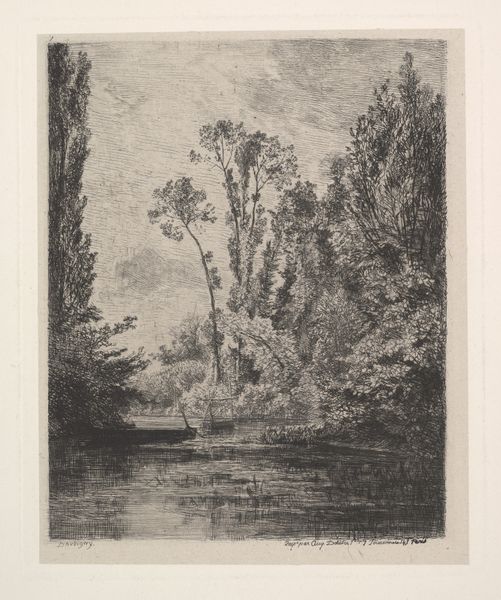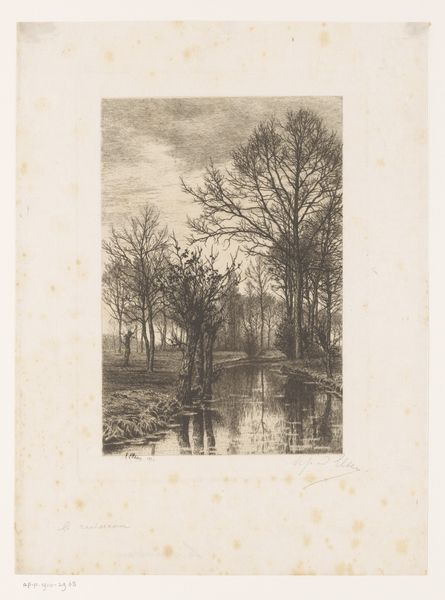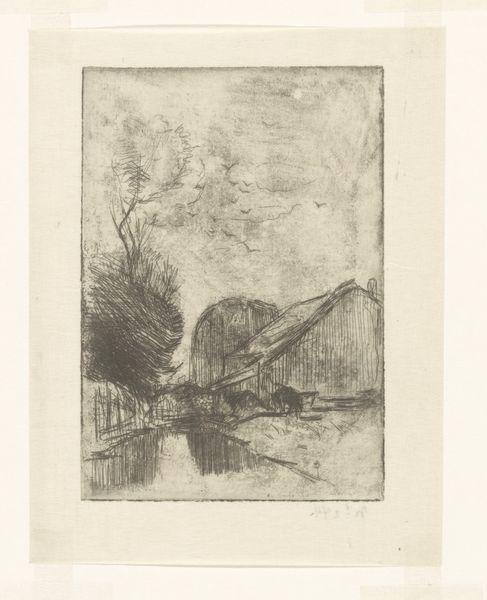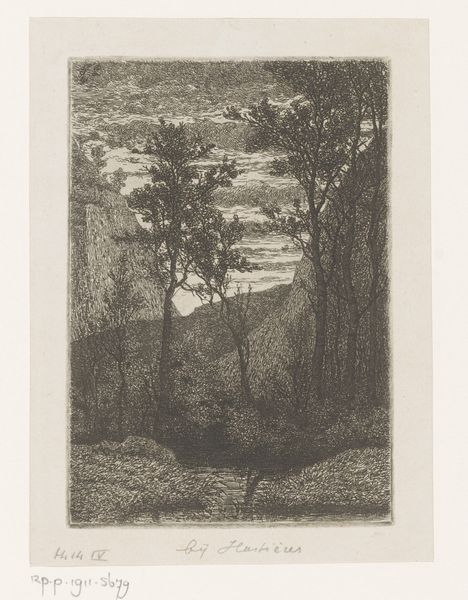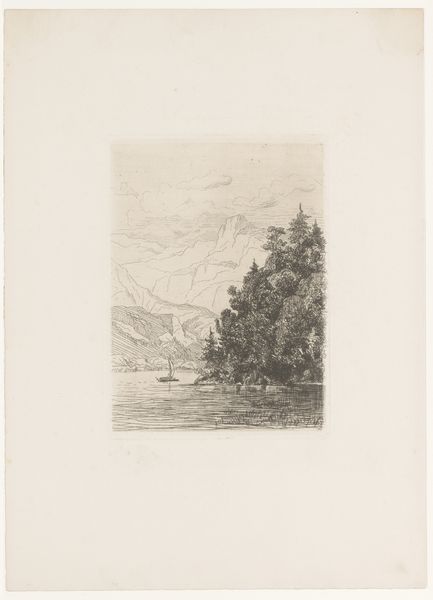
print, etching
# print
#
etching
#
landscape
#
realism
Dimensions: height 235 mm, width 172 mm
Copyright: Rijks Museum: Open Domain
Editor: This is "Bosrivier" by Carl Theodoor Meyer, a landscape etching made sometime between 1870 and 1932. The scene is tranquil, almost melancholic, with the muted tones and the reflections in the water. How do you interpret this work? Curator: The stillness you perceive, and that reflection, certainly holds significance. Water, in art, often symbolizes the subconscious, the emotional depths. Look closely – what shapes emerge from the reflections? They mirror the trees, yes, but are they exact copies, or something… more? Editor: I see what you mean, they’re distorted, less defined. They almost feel like ghosts of the trees above. Curator: Precisely. And trees themselves are ancient symbols. A lone tree can represent individuality, resilience, connection to the earth. Their image recurring, distorted in the water, it presents a duality - conscious perception, and the hidden self. Think of it, also, in light of the late 19th, early 20th century when this was created. Freud was changing how we saw our minds. Editor: So the artist might be exploring this new psychological landscape? Curator: Quite possibly. The haziness of the etching itself adds to this sense of dreaminess, of peering into something not quite solid, not entirely knowable. What emotional impact does that ambiguity have on you? Editor: It’s unsettling but also intriguing. I feel like there’s something hidden, just out of reach. I initially just saw a pretty landscape, but now I’m seeing it as a psychological portrait too. Curator: Indeed, that is how symbols and archetypes can offer a window into the inner life, if we observe what persists beneath the surface, over long spans of time. Editor: This has definitely changed how I view landscape art! I will not take such art at face value going forward. Curator: Me neither; it also helps that one symbol leads us to seek additional context, or similar use in another historical period.
Comments
No comments
Be the first to comment and join the conversation on the ultimate creative platform.
